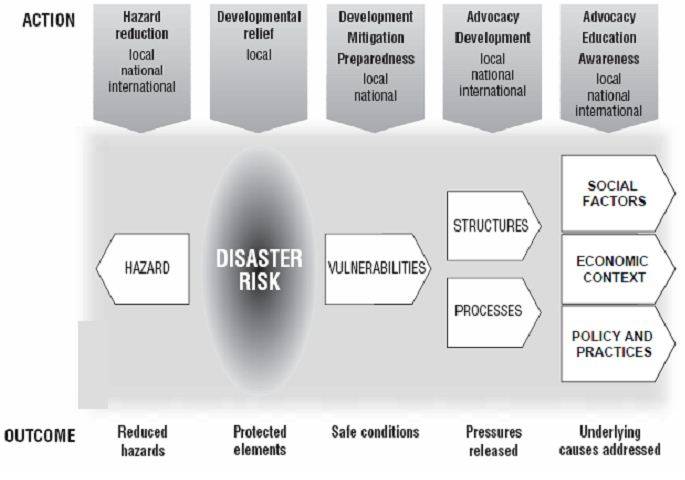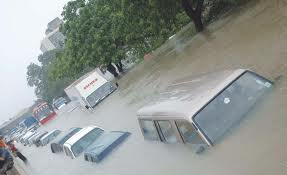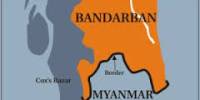National Disaster Management Policy
A National Disaster Management Policy will be formulated to define the national perspective on disaster risk reduction and emergency management, and to describe the strategic framework, and national principles of disaster management in Bangladesh. It will be of strategic in nature and will describe the broad national objectives, and strategies in disaster management.
Disaster Management Plans
The Bangladesh National Plan for Disaster Management is a strategic document to be effective for a certain period of time. This is an umbrella plan that provides the overall guideline for the relevant sectors and the disaster management committees at all levels to prepare and implement their area of roles specific plans. The Disaster Management and Relief Division (DM&RD) being the focal ministry for disaster risk reduction and emergency management will take the lead role in disaster risk reduction and emergency management planning. Additionally, there will be a few hazard specific management plans, such as Flood Management Plan, Cyclone and Storm Surge and Tsunami Management Plan, Earthquake Management Plan, Drought Management Plan, River Erosion Management Plan, etc. Moreover, there will be a detailed Disaster Management Plan for each District, Upazila, Union and Pourashava and City Corporation of the country. A District Disaster Management Plan will be the compilation of the Upazila Disaster Management Plans of the District. Similarly an Upazila Disaster Management Plan will be the compilation of the union disaster management plans of that Upazila prepared by the Union DMCs. So DMCs at Union and Pourashava levels will be mainly responsible for conducting the risk assessments and prepare the ground level plans. Once developed those will be sent to the DMCs at one level higher – Upazila DMCs, whose role will be to verify and compile the union plans and identify the resource requirements for the Upazila.
Standing Orders on Disaster
The Standing Orders on Disaster describes the detailed roles and responsibilities of committees, Ministries and other organizations in disaster risk reduction and emergency management, and establishes the necessary actions required in implementing Bangladesh’s Disaster Management Model. The Standing Orders have been prepared with the avowed objective of making the concerned persons understand their duties and responsibilities regarding disaster management at all levels, and accomplishing them. All Ministries, Divisions/Departments and Agencies shall prepare their own Action Plans in respect of their responsibilities under the Standing Orders for efficient implementation. The National Disaster Management Council (NDMC) and Inter- Ministerial Disaster Management Coordination Committee (IMDMCC) will ensure coordination of disaster related activities at the National level. Coordination at District, Thana and Union levels will be done by the respective District, Thana and Union Disaster Management Committees. The Disaster Management Bureau will render all assistance to them by facilitating the process.
National Plan for Disaster Management
The National Plan for Disaster Management is prepared by the Disaster Management and Relief Division. The plan includes the following as minimum:
- Introduction
- GoB Vision for Disaster Management
- Hazards profile of Bangladesh
- Disaster development linkages: national and international drivers for change
- Aim of the plan
- Strategic goals of the plan
- Conceptualizing disaster management in Bangladesh
- Disaster management system in Bangladesh
- The roles and responsibilities of entities involved in emergency operations and risk reduction
- Disaster management regulative framework
- Action matrix for disaster risk reduction and emergency management in Bangladesh describing the priorities and the strategies
- Review and evaluation
- Implementation and follow-up
- Financing of the plan
- Other matters relating to disaster management as deemed necessary by appropriate authority for inclusion in the plan.
The Plan is to be used to:
- Articulate the long-term strategic focus of disaster management in Bangladesh.
- Demonstrate a commitment to address key issues: risk reduction, capacity building, information management, climate change adaptation, livelihood security, issues of gender and the socially disadvantaged, etc.
- Show the relationship between the government vision, key result areas, goals and strategies, and to align priorities and strategies with international and national drivers for change.
- Detail a road map for the development of disaster management plans by various entities.
- Guide the DM&RD in the development and delivery of guidelines and programmes.
- Illustrate to other ministries, NGOs, civil society and the private sector how their work can contribute to the achievements of the strategic goals and government vision on disaster management.
- Provide a framework within which to report performance and success in achieving goals and strategies.
District Disaster Management Plan (DDMP)
There is a District Disaster Management Committee (DDMC) at the District level. The DDMC consists of the Deputy Commissioner of the District as the chairperson and members comprising all District level department heads, NGO leaders and civil society members. District Relief and Rehabilitation Officer (DRRO) acts as member secretary of the committee. Members of Parliament act as advisors of the committees. The committee is required to meet bi-monthly during normal period and as and when necessary during emergency situation.
There will be a plan for each District titled “District Disaster Management Plan” comprising both disaster risk reduction and emergency response to be prepared by the District Disaster Management Committee. This is a plan to be prepared by compilation of the Upazila and Pourashava Disaster Management Plans of the District being received from the respective Upazila and Pourashava/City Corporation DMCs. The DDMP should highlight and articulate, among others, the following:
a. The areas in the District vulnerable to different forms of hazards and risks.
b. Total resource requirements and the planned action for the District.
- To take measures for prevention and mitigation of disasters by government agencies, NGOs, CBOs and the private sector within the District.
- Capacity building and preparedness measures to be taken by government agencies, NGOs, CBOs and the private sector.
- Strengthening emergency response management system plans and procedures in the event of a disaster.
c. The response plans and procedures in the event of a disaster, providing for:
- Allocation of responsibilities to the departments of the government at District level and other DMC members
- Procedure for mobilization of resources
- Prompt response to disaster and relief thereof
- Procurement of emergency supplies
- Operation of disaster shelters
- Restoration of emergency services, such as water supply, gas supply, power, telecommunication, road links
- Provision of emergency medical services
- Burial of dead bodies
- Trauma counseling
- The dissemination of information
d. Recovery plans and procedures delineating damage assessment procedure, restoration of damaged public infrastructure, resumption of educational institutions, restoration of livelihood, rehabilitation of affected people, especially the disabled, and elderly women and children.
e. The DDMP shall be reviewed and updated annually.
f. The copies of the DDMP shall be made available to all District level stakeholders, Divisional Commissioners, etc.
g. A copy of the DDMP will be sent to the Disaster Management Bureau and all relevant ministries and divisions.
h. The DMB/NDMTI will provide technical advice and capacity building services to all DMCs.
Upazila Disaster Management Plan (UzDMP)
Upazila is an important and vital administrative unit of Bangladesh. There is an Upazila Disaster Management Committee (UZDMC) at the Upazila level. The UzDMC consists of the Upazila Nirbahi Officer as the chairperson and members comprising all Upazila level department heads, NGO leaders and civil society members. The PIO acts as the member secretary of the committee. Members of Parliament act as advisors of the committees. The committee is required to meet bimonthly during normal period and as and when necessary during emergency situation.
There will be a plan for each Upazila titled “Upazila Disaster Management Plan” comprising both disaster risk reduction and emergency response to be prepared by the Upazila Disaster Management Committee by compiling all the Union Disaster Management Plans of the Upazila being received from the respective Union DMCs of the Upazila. The UzDMP should highlight and articulate, among others, the following:
a. The areas in the Upazila vulnerable to different forms of hazards and risks.
b. Total resource requirements and the planned action for the District.
- To take measures for prevention and mitigation of disasters by government agencies, NGOs, CBOs and the private sector within the District.
- Capacity building and preparedness measures to be taken by government agencies, NGOs, CBOs and the private sector.
- Strengthening emergency response management system plans and procedures in the event of a disaster.
c. The response plans and procedures in the event of a disaster, providing for:
- Allocation of responsibilities to the departments of the government at District level and other DMC members
- Procedure for mobilization of resources
- Prompt response to disaster and relief thereof
- Procurement of emergency supplies
- Operation of disaster shelters
- Restoration of emergency services, such as water supply, gas supply, power, telecommunication, road links
- Provision of emergency medical services
- Burial of dead bodies
- Trauma counseling
- The dissemination of information
d. Recovery plans and procedures delineating damage assessment procedure, restoration of damaged public infrastructure, resumption of educational institutions, restoration of livelihood, rehabilitation of affected people, especially the disabled, and elderly women and children.
e. The UzDMP shall be reviewed and updated annually.
f. The copies of the UzDMP shall be made available to all Upazila level stakeholders and members of DDMCs.
g. A copy of the UzDMP will be sent to the District Disaster Management Committee and DMB.
h. The DMB/BIDMTR will provide technical advice and capacity building services to all DMCs.
Union Disaster Management Plan (UDMP)
Union Parishad is the lowest administrative unit of Bangladesh. There is a Disaster Management Committee at the Union level. The UDMC is chaired by the elected Chairman of the respective Union Parishad. The Union Disaster Management Committee consists of the Union Parishad Chairman as the Chairperson and members comprising all the Government department head at Union level, members of Union Parishad, NGO leaders working in respective union and civil society members. Secretary of the respective Union Parishad acts as the member secretary of the committee. The committee is required to meet bimonthly during normal period and as and when necessary during emergency situation.
There will be a plan for each Union titled “Union Disaster Management Plan” comprising both disaster risk reduction and emergency response to be prepared by the Union Disaster Management Committee following a proper community risk assessment procedure to be provided by DM&RD with the participation of vulnerable groups and the communities.
The UDMP should highlight and articulate, among others, the following:
a. Defining and redefining community risks to hazards utilizing both traditional and scientific knowledge.
b. Total resource requirements and the planned action for the District.
- To take measures for prevention and mitigation of disasters by government agencies, NGOs, CBOs and the private sector within the District.
- Capacity building and preparedness measures to be taken by government agencies, NGOs, CBOs and the private sector.
- Strengthening emergency response management system plans and procedures in the event of a disaster.
c. The response plans and procedures in the event of a disaster, providing for:
- Allocation of responsibilities to the departments of the government at District level and other DMC members
- Procedure for mobilization of resources
- Prompt response to disaster and relief thereof
- Procurement of emergency supplies
- Operation of disaster shelters
- Restoration of emergency services, such as water supply, gas supply, power, telecommunication, road links
- Provision of emergency medical services
- Burial of dead bodies
- Trauma counseling
- The dissemination of information
d. Recovery plans and procedures delineating damage assessment procedure, restoration of damaged public infrastructure, resumption of educational institutions, restoration of livelihood, rehabilitation of affected people, especially the disabled, and elderly women and children.
e. The UDMP shall be reviewed and updated annually.
f. The copies of the UDMP shall be made available to all Union level stakeholders, UNOs and DCs.
g. A copy of the UDMP will be sent to the Upazila Disaster Management Committee.
h. The DMB/BIDMTR will provide technical advice and capacity building services to all DMCs.
Paurashava/City Corporation Disaster Management Plan
Pourashava is at the bottom of the urban administrative tier of Bangladesh. There is a Disaster Management Committee at the City Corporation/Pourashava level. The Pourashava Chairman is the head of the committee. The members of the Committee are all Pourashava commissioners, representatives from all the Government departments, NGOs and CBOs. Chief Executive Officer of the Pourashava is the member secretary of the committee. The committee is required to meet monthly during normal period and as and when necessary during emergency situation.
Besides, metropolitan cities in Bangladesh have City Corporation Disaster Management Committees with the Mayor as the Chairman and comprising members as it is in case of Pouroshavas. There will be a plan for each Pourashava/City Corporation titled “Pourashava/City Corporation Disaster Management Plan” to be prepared by the “Pourashava/City Corporation Disaster Management Committee having linkages with the National Plan for Disaster Management.
The PDMP/CCDMP should highlight and articulate, among others, the following:
a) The areas in the Pourashava/City Corporation vulnerable to different forms of hazards and risks.
b) Total resource requirements and the planned action for the District.
- To take measures for prevention and mitigation of disasters by government agencies, NGOs, CBOs and the private sector within the District.
- Capacity building and preparedness measures to be taken by government agencies, NGOs, CBOs and the private sector.
- Strengthening emergency response management system plans and procedures in the event of a disaster.
c) The response plans and procedures in the event of a disaster, providing for:
- Allocation of responsibilities to the departments of the government at District level and other DMC members
- Procedure for mobilization of resources
- Prompt response to disaster and relief thereof
- Procurement of emergency supplies
- Operation of disaster shelters
- Restoration of emergency services, such as water supply, gas supply, power, telecommunication, road links
- Provision of emergency medical services
- Burial of dead bodies
- Trauma counseling
- The dissemination of information
d) Recovery plans and procedures delineating damage assessment procedure, restoration of damaged public infrastructure, resumption of educational institutions, restoration of livelihood, rehabilitation of affected people, especially the disabled, and elderly women and children.
e) The PDMP shall be reviewed and updated annually.
f) The copies of the PDMP shall be made available to all Pourashava/city corporation level stakeholders, UNOs and DCs.
g) A copy of the PDMP will be sent to the District Disaster Management Committee and Disaster Management Bureau.
h) The DMB/ BIDMTR will provide technical advice and capacity building services to all DMCs.
Disaster Management Models
In the literature, there are a lot of models that respect the classical principles of the disaster management such as Traditional model, Expand and Contract model, Kimberly’s model, Tuscaloosa model, Circular model, Manitoba integrated model, etc.
Traditional Model
Traditional model contains only two phases:
- Pre-Disaster risk-reduction model phase and
- Post-disaster recovery phase.
The first stage contains preparation, mitigation, and prevention. The second stage contains response, recovery, and development. It is a trivial model that doesn’t consider the moment of which the crisis occurs. Moreover, data integration and decision making is not easily achieved.
Expand and Contract model
In this model, disaster management is seen as a continuous process. There is a series of activities that run parallel to each other rather than as a sequence.
Actions continue side by side, expanding or contracting on demand. As an example immediately after a disaster the ‘relief and response strand’ will expand. But with time this activity would reduce and the ‘recovery and rehabilitation strand’ will expand. The relative weighting of the strand will vary depending on the relationship between the hazard event and the vulnerability of the community at risk. This model doesn’t consider the external or internal factors related to the hazard event. Moreover, in case of any hazard event other strengthens factors could appear during the event that might have effects on the event and this model doesn’t take it into consideration. Unfortunately this model is not applicable for different cases of disaster. Also budget, cost, time, technology, infrastructure, supply chains are not taken into consideration by the authors of the proposal.
The Disaster Crunch Model
It is a framework for understanding and explaining the causes of disaster and adopts a cause-effect perspective. It is a pressure model. Vulnerability (pressure) is seen as rooted in socio-economic and political processes. These have to be addressed (released) for disaster risk reduction.
The model reveals a progression of vulnerability. It begins with underlying causes in society that prevents satisfying demands of the people. The crunch is on these more vulnerable communities due to the unsafe conditions they live in.
The Disaster Crunch Model proceeds from the premise that a disaster happens when and only when, a hazard impacts on a vulnerable community or people.
A hazard is the Trigger Event, which sets off the disaster. It could be an earthquake, volcanic eruption, landslide, flood or civil conflict. The Unsafe Conditions are the vulnerable context where people and property are exposed to risk of disaster. They may be
Fragile Local Economy:
Livestock at risk
Low-income levels
Low health status etc.
Fragile Physical Conditions:
Disaster-prone locations
Unsafe buildings
Unsafe infrastructure etc.
This may be diagrammatically represented as follows:

The Release Model
To reduce the risk of disaster we need to address the factors that cause disaster risk. This
means reversing all the components of the Crunch model. Action may be necessary at local,
national and international level.

Hazard Reduction
Ways can be found to reduce the occurrence, frequency or strength of various hazards. Examples of this are:
• Build embankments to reduce flooding.
• Plant trees on slopes to help stop landslides, reduce erosion & improve local climate.
• Influence policies that limit climate change through advocacy.
Developmental Relief
Local capacities are often neglected and in some cases destroyed through “traditional relief” provision. Relief can create dependency and people will be more vulnerable if a similar hazard re-occurs in future. The following table contrasts the traditional relief approach with a developmental approach to relief. Our aim is to reduce the potentially bad effects of relief and adopt the best of development.
A development approach can be slower because it involves a higher level of participation, but it identifies and builds local capacities so that communities become more resilient to face future hazards. Participation and ownership are key words – dependency is not created and the need for future relief handouts is hopefully avoided.
Development, Mitigation and Preparedness
All vulnerable people have strengths. In this model, strengths are called ‘capacities’. Capacities can be identified in advance of a disaster and built upon with the aim of reducing the adverse impact of a hazard upon people, property & the environment. (Examples would include places of “safe” refuge, alternative livelihoods or knowledge of “famine foods”). A well prepared community, with contingency plans in place, will also be better able to cope with the impact of a hazard.
Kimberly model and Tuscaloosa model
Kimberly model and Tuscaloosa model decompose the disaster management cycle in four phases: mitigation, preparation, response and recovery. The main difference is that Kimberly model considered the mitigation and the response on the same base level, and the recovery on the top level (see.fig.8a), while Tuscaloosa model (see.fig.8b) limited the effect of disaster by inserting the mitigation at the beginning and the end of the cycle.
Both Kimberly and Tuscaloosa models require well trained employees in order to apply these phases effectively and can be utilized only in specific situations: emergency management in hospitals. Moreover; high budget will be expected for the employees.
Kelly Model
Kelly decomposed the disaster management cycle into eight phases. He proposed a circular model that reduces the complexity of disasters and also handles the nonlinear nature of disaster events. The ability to learn from actual disasters is the main advantage of this model. The circular model is shown below in Fig. 9. This model requires developing a comprehensive database of disaster impact and input output information which needs well trained personal to handle this information. Moreover, highly tech infrastructure is badly needed to achieve reasonable results.
Manitoba Model
Manitoba model decomposes the disaster management cycle in six phases: a strategic plan, hazard assessment, risk management, mitigation, preparedness and monitoring and evaluation. The model describes the long term desired state of the disaster management in the health sector. It is incorporated with the four main elements of the hazard assessment, risk management, mitigation and preparedness. The balance between preparedness and flexibility is considered a main advantage of this model. Moreover, high tech infrastructure is needed for this model to enable adapting any modifications and updated information. For that, highly well-trained people are required to handle his infrastructure. This model requires a high annual budget to setup this model if needed. The cost of training the end users on this system is very high. The evaluation stage in this model is based on judgment.
Recent Multi-Layer Models for Crisis and Disasters Management
In his impressive monograph Craddock presented two models of crisis management, which cover also the area of the disaster management, being more general. The first model presents the main phases and the activities of crisis timeline, namely four phases: pre-incident phase, incident occurrence, post occurrence phase and post- incident phase. Each phase describes the main activities needed to handle the crises before incident occurring, at the time which the incident occurs and the consequences, and the restoration actions required in the post occurrence phase. At the end of the last phase, normality returns and activities return to those of the pre-incident phase. The boundaries between the different phases are flexible and some phases may overlap.
The second model is aiming at understanding the technological capabilities required to respond to a crisis. It is based on determining the set of resources and a plan required by the incident commander in order to handle an incident that has just occurred. This requires a set of information resources, resilient communication to get information from the main source to the commander, and plan implementation. The technologies used in the second model produce an efficient plan at the time of occurrence and used during planning and preparing for future incidents.
















